Tips for Using an Underwater Metal Detector
Published by Carolyn Yohannes on 10/12/17
Often times, underwater is where the best treasures are found – just ask any pirate! Thousands of people lose items in bodies of water every day Because those areas are not as hunted as places on dry land, your chances of finding valuables are far greater when you hunt in the water. If you haven’t tried using an underwater metal detector yet, you should. Here are some tips to help you get started.
Choose the Right Metal Detector
This decision should be based on the type of water that you want to search – freshwater or saltwater.
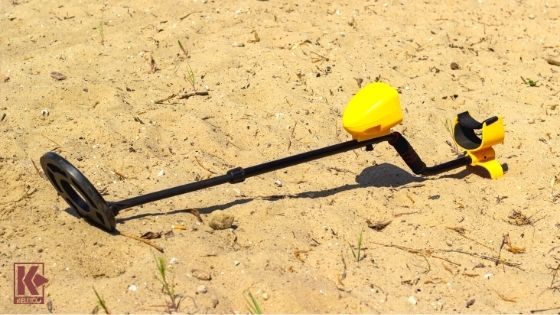
Metal Detector
If you are going to hunt freshwater lakes, rivers, or other bodies of water, you should use a very low frequency (VLF) machine such as the Minelab Excalibur II metal detector. It has great sensitivity and will detect even small or thin targets like bracelets and rings.
For saltwater, you will want to use a pulse induction (PI) detector. They are not as affected by wet sand and ground mineralization. However, they are not as sensitive as VLF detectors so you may find yourself spending more time searching. Check out the Nokta Makro Pulsedive, which many consider one of the best underwater PI detectors on the market today.
Choose the Right Accessories
Make sure that you have waterproof headphones, which sometimes come with a metal detector. They will help cut out external noise and let you focus on deep targets. Additionally, you will need a carry bag for transporting your detector, a trowel, and at least one sand scoop. Having a sand scoop will save you a lot of time.
Use the Right Settings
Adjust your settings for underwater hunting based on how far underwater you plan to search and what type of targets you are looking for. To get the right frequency, test your detector on the kind of targets you are looking for on land.
Use the Right Technique
How you hunt with an underwater metal detector is important. Work in slow, consistent motions. You may want to come up with a path to follow, covering it exhaustively before heading to the next area.
Search the Right Areas
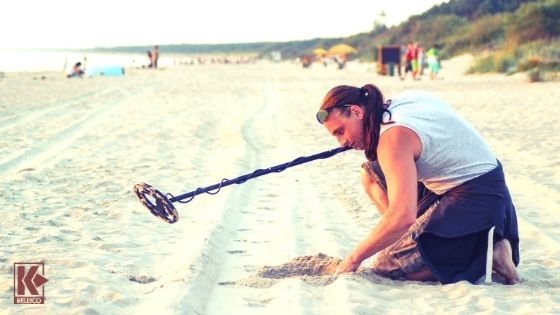
Search The Right Areas
When you are deciding which areas to hunt, consider the places that have the most traffic. The more people who have visited the area, the greater your chances of finding lost valuables. Additionally, plan your time so that you are hunting in the daytime. It’s not easy to hunt and separate trash from the treasure in the dark.
Time Things Right
Successfully using an underwater metal detector is almost always dependent on Mother Nature, so it’s important that you understand it. When you are beginning to search beaches, make sure that it is a little before low tide. This will give you the best results for finding targets in the deeper areas of the ocean. Use the currents to lead you to high potential sand. Search areas where you see water movements because a lot of sand will be carried there by the current. Keep in mind that the ocean movements often carry items that are about the weight and deposits them together in sand pockets. That means that if you come across a few coins, you should keep searching in the same area.
Like any other metal detecting, underwater hunting takes some practice. But when you follow the tips above, you will have a great start to finding underwater treasures.
Finding Shallow Water Treasure While Metal Detecting
Shallow water metal detecting may be one of the most exciting ways to hunt. You are more likely to find valuable targets – like gold rings, coins, and other jewelry – than in most other locations.
It’s really easy to loose change out of your pocket when you’re stripping down to your swimsuit, and fingers that are covered in sunscreen are easy for rings to slip off of, often in the water. That makes the shallow water of the shoreline the perfect place to hunt. And an extra advantage of shallow water metal detecting is that there will be far less trash for you to worry about wasting time on.

Shallow Water Treasure
Shallow water hunting, for the purposes of this post, is hunting from the high-water mark to about waist-deep. The high-water mark is the level that the seawater reaches during high-tide. You will obviously have to have a metal detector that is submersible up to several feet, and you will need a sturdy long-handled scoop. Depending on the time of year and location you are hunting, you may only need a swimsuit or waders, or in colder climates, you’ll need a wet suit.
Shallow Water Metal Detecting Techniques
Using your metal detector in shallow water is a lot like beach detecting. Because the surf is moving over your feet, it’s important that you quickly mark any target that is located. The simplest way to accomplish this is to firmly plant one foot just behind the target and leave it there until the target is dug up. Once you’ve marked the target area with your foot, place your scoop in front of your foot that is marking the spot and get a deep scoop of sand. Without dumping or sifting the sand in the scoop, check the hole again with your detector. If the target is still there, dump your scoop and get another scoopful of sand. If you no longer detect the target in the hole, then hopefully it’s in your scoop. Because of the nature of the moving water, you may have to scoop two or three times. Just make sure to re-check the hole every time.
Work with the Tide
When you are working in shallow water, you have to be aware of the tide. You’ll want to start your hunting at least two hours before low tide. Then you are able to search as the tide is going out and until it turns and forces you out of your search area. Often, the best areas for finding targets are in slightly deeper water. When the tide is low, you are able to search for areas where people swim during high-tide.
Ocean Versus Small Bodies of Water
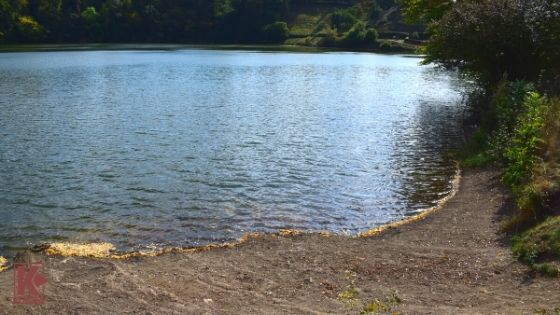
Beach Lake
The beaches of oceans are much different than the beaches of lakes or large ponds. Ocean beaches are in constant movement – especially following storms. That means that you may find coins and jewelry that have been dropped recently, but it’s more likely that you will find items that have been lost somewhere else and moved and buried due to the force of the surf. On the beaches of ponds and lakes there isn’t much movement, so items will typically stay very close to where they are dropped. On lake beaches, look for areas where people enter the water, or wherever they might gather. Areas that have higher traffic will have more finds. For more information on this subject, check out our diverse beach & water books section on our website.
How to Metal Detect Underwater
Underwater metal detecting is a fun way to improve your chances of finding more targets. Having areas on land and in water combined to search is also fun in the summer because you can cool off in the water after searching the shoreline and beach.
Hunting underwater is different than hunting on land. In fact, it can be challenging at times. And you do have to invest in a detector that is waterproof. But, when you have the proper equipment and the following tips, you will be ready to make some amazing finds.
Plan Smart
It’s really important to plan your hunting trip well so that you don’t end up wasting your time and effort. The first thing to consider is the time of year you hunt.
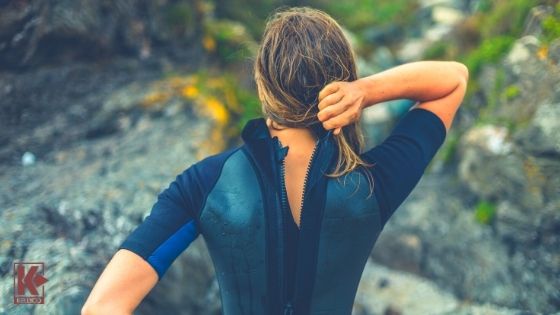
Wear A Wetsuit
It’s really only feasible to metal detect underwater during the summer. That’s because it’s the time of year that beaches have the most tourists who leave items behind, and the water will be warmer, so you can spend more time hunting in it. If you do make the decision to hunt in the winter, be sure that you plan for it – wear a wetsuit.
Be sure to check weather and tide reports so you can plan accordingly.
Decide Where You Will Hunt
To improve your chances of making good finds, you should choose the most visited area of the beach to search. That goes for underwater hunting too. You’ll typically find that the most productive spots are the ones where lots of people congregate. Look for areas around piers, swimming holes, and docks where swimmers dive into the water.
Be Methodical with Your Search
When you are detecting underwater, you need to have a method in how you search. You may want to follow an imaginary line, moving along it with five to six feet swipes. This is one of the most popular methods that detectorists use.
Be aware of any potholes on the ocean floor, you may find that they hold something valuable. Also, you may want to use a long-handled trowel for retrieving underwater targets – it makes it easier if the ocean floor is rocky and will keep you from having to go underwater to dig.
Know the Water Current
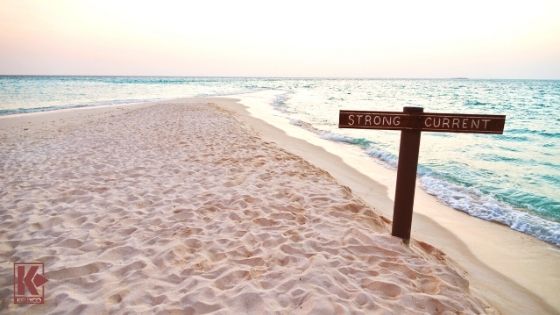
Water Current
When you pay attention to the current of the water (is it moving in or out?), it will help you find targets that your detector signals.
It will also allow you spot areas where items may get stuck, like in rocks or seaweed.
Search Underwater in the Daytime
Not only is it not as safe to use an underwater metal detector at night, but it’s also extremely hard. If you want to make sure that you have the most time to search, start early, and search all day. Daytime hunting gives you the best clarity and visibility, so you’ll have an easier time.
Don’t Take Scuba Lessons
When you use an underwater metal detector, you don’t have to know how to scuba dive. The best searches are typically in four feet of water or less. That makes scooping up targets easy, and there’s no swimming involved.
Ready to dive into underwater hunting? Check out our selection of underwater and beach metal detectors!
Best Underwater Metal Detectors
Taking the dive into treasure hunting? Here are the basics to get you started in your new hobby. In order to choose the best underwater metal detector for you, consider the following questions:
- Will you be in saltwater, or freshwater?
- Where will you use your waterproof metal detector?
- Will it predominately be on the beach, in the shallow, or on deep dives?
Two Categories
When deciding which detector is right for you, keep in mind your search area. An underwater metal detector is divided into two categories. The two categories are Pulse Induction Metal Detectors (PI) and Very Low-Frequency Metal Detectors (VLF).
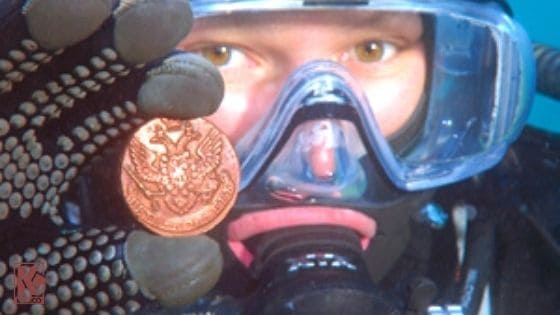
Keep In Mind Your Search Area
Pulse Induction Metal Detectors (PI) are deep seeking and best for saltwater and underwater search areas, due to the enhanced search depth. Working through voltage and electronic pulses, the PI metal detectors are not affected by mineralized water; however, these waterproof metal detectors are typically unable to distinguish between trash and treasure, causing you to need to dig up an increased number of targets to retrieve the maximum number of treasures. Take your time covering your search area to ensure you don’t rush past what could be a potential jackpot. Here’s a list of quality Pulse Induction Metal Detectors:
- Aquascan Aquapulse AQ1B Standard Diver Kit
- JW Fisher Pulse 8x
- Tesoro Sand Shark
- Garrett Infinium LS
- Garrett Sea Hunter Mark II
Very Low-Frequency Metal Detectors (VLF) create an electro-magnetic field ranging from 3 to 100kHz. The VLF underwater metal detectors allow the individual to differentiate between a valuable and non-valuable find, saving you a lot of time. It is important to keep in mind, that VLFs are often compromised by the presence of salt and other minerals. If you decided that a Very Low-Frequency Metal Detector is right for you, make sure it has a Salt Water setting, and use the sensitivity and ground balance settings to navigate the mineralization. Below is a list of the best VLF metal detectors:
- Garrett AT Pro
- Minelab CTX-3030
- Tesoro Tiger Shark
- Minelab Excalibur II
- Fisher CZ-21 Metal Detector With 10” Coil
- Fisher 1280-X Aquanaut Metal Detector With 10” Coil
Remember
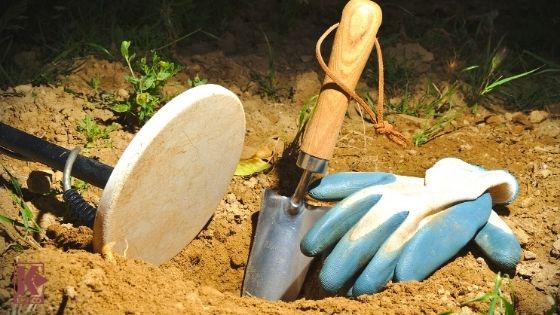
Accessories
The list would be endless for all the accessories and upgrades available for the individual embarking on the journey of this remarkable hobby. But here is a list of the basic necessities:
These accessories will help you carry your items while covering the search area, hear your finds as your detector alerts you, and dig up your buried treasure.
Let the Adventure Begin
With your submersible metal detector and accessories, you will uncover lost treasures and forgotten relics. Enjoy hours of relaxing strolls down the shoreline, good exercise, and, who knows, maybe even gold.
